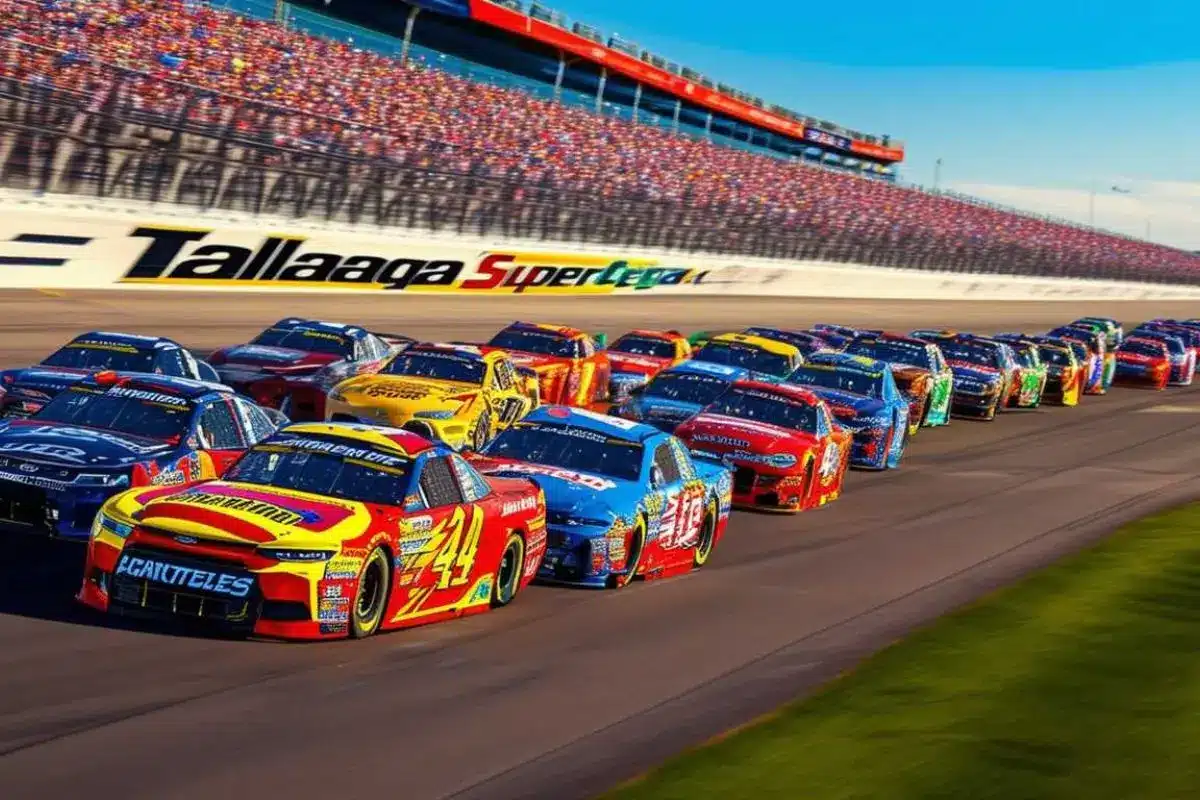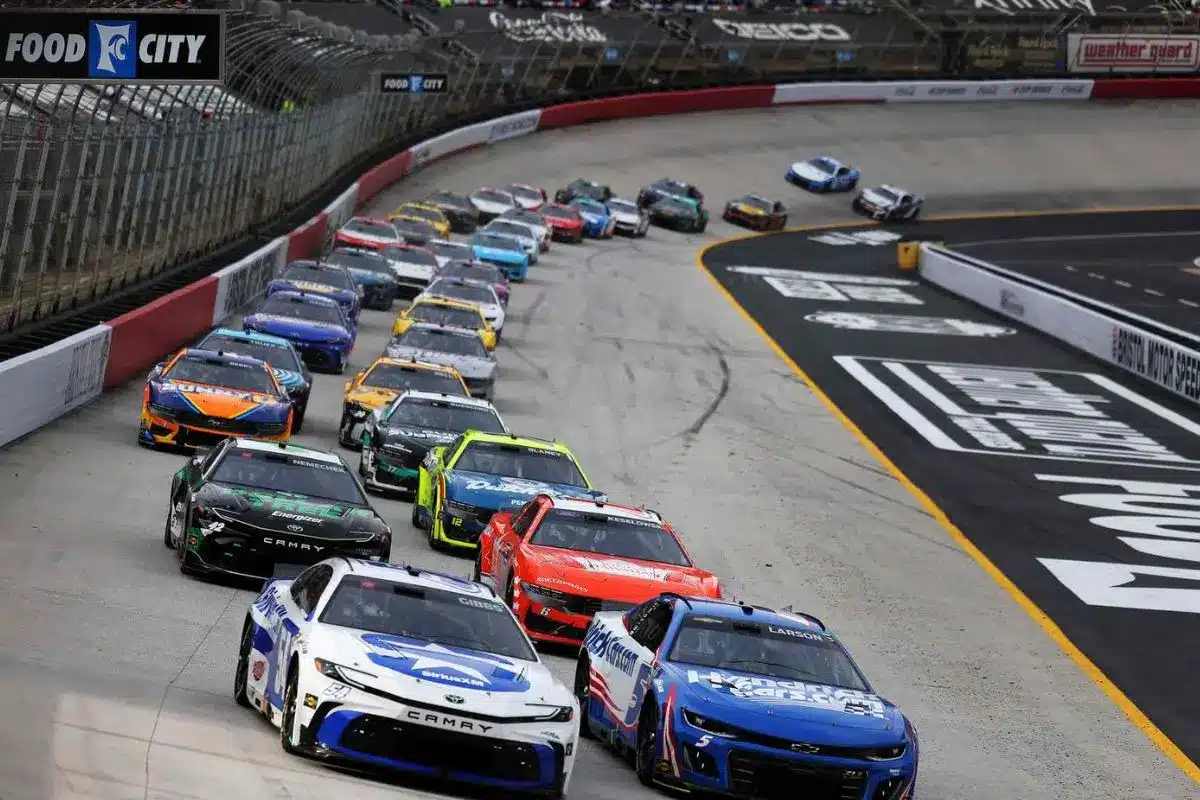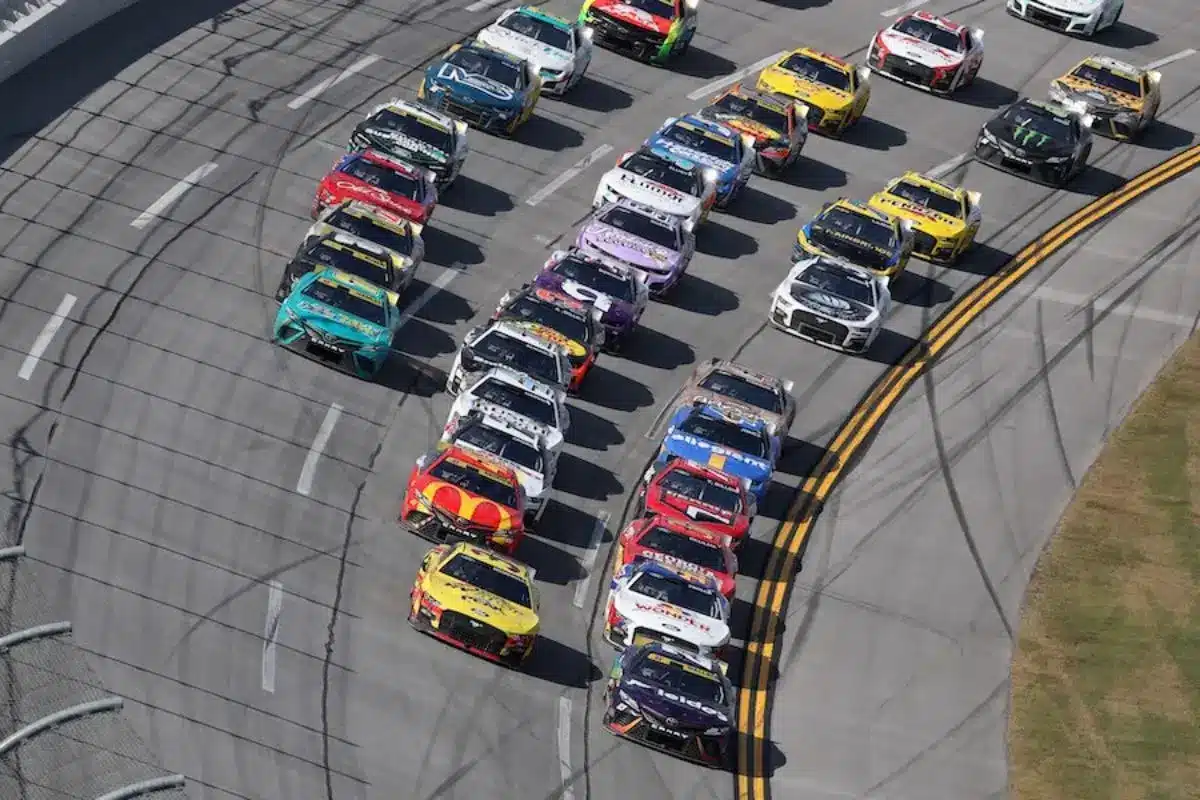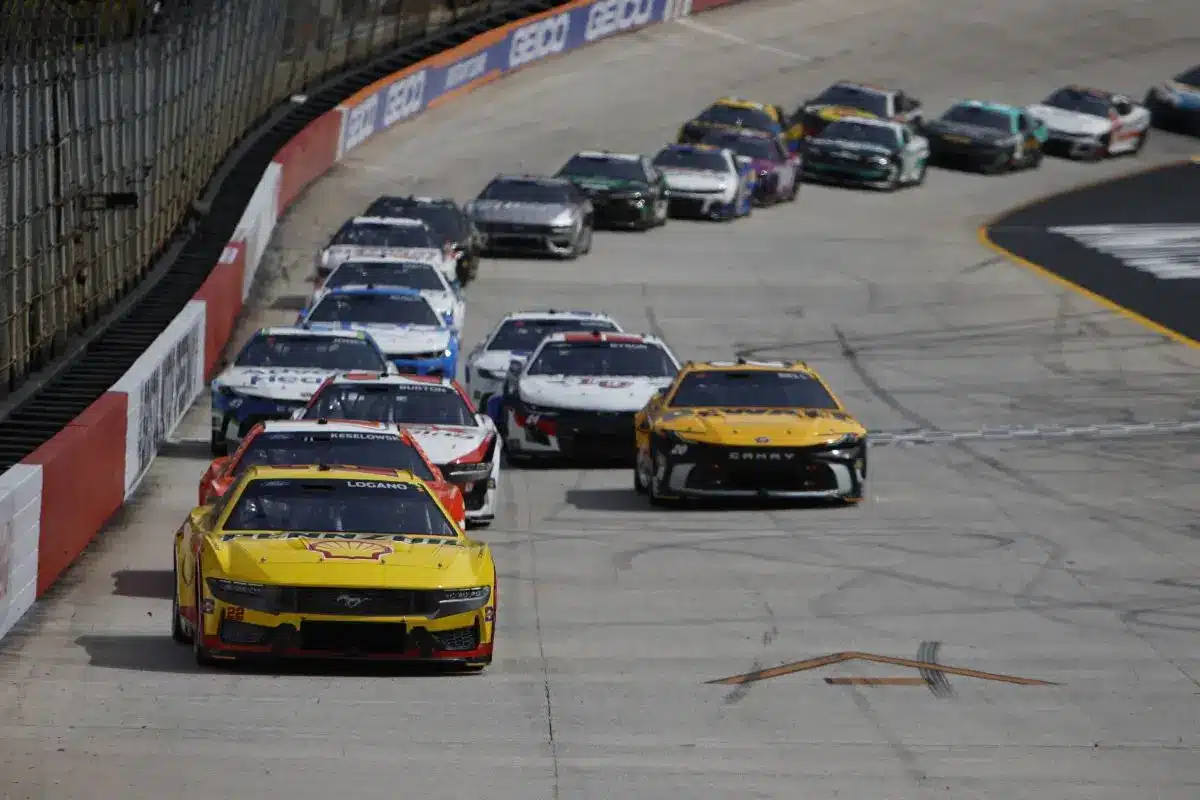NASCAR Short Tracks’ Future at Risk: The future of NASCAR‘s short tracks is increasingly uncertain, as the current Next-Gen car designs have not met the expectations for competitive racing. The suggestion to elevate horsepower to 1000 bhp has emerged as a potential remedy, with proponents arguing that it could foster more dynamic racing and improve fan engagement. However, this proposal raises critical questions regarding tire durability and driver safety. Balancing innovation with the sport’s traditional values could determine whether short-track racing will thrive or continue to decline.
Key Highlights
- Increasing horsepower to 1000 bhp could enhance overtaking opportunities by reducing throttle reliance, and addressing current short-track competitiveness issues.
- The robust design of Next-Gen cars limits driver skill emphasis, suggesting higher horsepower may restore excitement and challenge in short-track racing.
- Denny Hamlin’s proposal for more horsepower has gained traction, indicating a shared concern within the racing community about short track performance.
- Current tire compounds are underperforming, with insufficient falloff, necessitating changes to improve racing dynamics and enhance overall spectator experience.
- Balancing innovation with tradition is essential for NASCAR to maintain the authenticity and legacy of short-track competition among fans.
NASCAR’s Struggle with Short Tracks and Potential Solutions
NASCAR’s ongoing challenges with short tracks highlight a crucial juncture in the evolution of the sport. The introduction of the Next-Gen car has brought considerable changes, yet these advancements have not translated into an improved experience on short tracks. The diminished competitiveness and excitement during races at these venues have prompted NASCAR to investigate diverse solutions. Among the proposed adjustments are softer tire compounds and modifications to aerodynamics through different splitters and diffusers. However, each of these approaches has yielded limited success, leaving teams and fans in a similar position questioning the efficacy of the current methods.
One area that remains largely unexamined is the potential to increase horsepower. While modern racing emphasizes efficiency and aerodynamics, the thrill of speed is an integral part of NASCAR’s identity. Introducing higher horsepower could improve the performance of the Next-Gen car on short tracks, allowing for more dynamic racing and better overtaking opportunities. This adjustment could reintroduce the raw excitement that characterized earlier eras of the sport.
As NASCAR grapples with these challenges, the need for a balanced solution becomes increasingly evident. The investigation of horsepower improvement must be accompanied by careful consideration of safety and competitive equity.
Ultimately, the sport stands at a crucial moment where creative thinking and a willingness to accept change may pave the way for revitalizing short-track racing. The decisions made today will certainly shape the future of NASCAR, requiring a tactical approach that honors its rich heritage while adapting to the demands of modern motorsport.
The Short-Track Debate Reignited
The ongoing challenges faced by short tracks have come to the forefront once again following the 2024 Bass Pro Shops Night Race, where drivers encountered considerable difficulties in overtaking. This event highlighted a persistent issue within NASCAR: the struggle for drivers to make successful passes on these tighter circuits. The inability to overtake not only diminishes competition but also compromises the excitement that fans expect from short-track racing.
In light of these challenges, the debate surrounding horsepower levels has been reignited. Denny Hamlin‘s recent proposal to increase horsepower has garnered support from numerous insiders, suggesting that enhancing engine power could provide the necessary uplift for drivers to navigate more effectively around their competitors. The notion posits that greater horsepower might facilitate overtaking, thereby reviving the thrilling essence of short-track racing.
However, this solution is not without its complexities. Increasing horsepower could lead to a range of ramifications, including heightened tire wear, altered handling characteristics, and potential safety concerns. NASCAR must weigh these factors carefully to guarantee that any adjustments align with the core principles of competitive balance and driver safety.
Furthermore, the response from the racing community remains divided; while some view additional horsepower as a pathway to restoration, others caution against altering the sport’s established dynamics.
NASCAR Insider and Hamlin’s Thoughts on Horsepower
Amidst the ongoing discourse surrounding short-track racing, the question of horsepower emerges as a vital factor influencing competition dynamics. With the Cup Series evolving to the Next-Gen cars, which produce 670 horsepower, many industry experts, including driver Denny Hamlin, argue that a return to higher horsepower levels—potentially reaching 1000 bhp—could greatly improve racing quality on short tracks.
Hamlin articulates a key challenge: “It’s hard to pass because we’re all in the gas so much,” suggesting that increased horsepower could facilitate overtaking by reducing the reliance on throttle.
“I think any horsepower you can add will make the racing better. It’s hard to pass because we’re all in the gas so much and so you have to get us out of the gas either through the tire or the horsepower. It’s that combination that makes passing so difficult.” – (HAMLIN)
Toby Christie, a NASCAR insider, echoes Hamlin’s sentiments, advocating for a horsepower increase as a necessary step towards revitalizing short-track competition. However, this assertion invites a deeper examination of the relationship between horsepower and race quality. Remarkably, Generation 6 cars, which featured only a slight horsepower increase over the Next-Gen models, still managed to deliver engaging short-track races.
Tire compounds, different diffusers, different splitters… and no matter what the short track package continues to produce the worst product in the #NASCAR Cup Series. You know what hasn’t been tried? Horsepower… can we try it, just once? Couldn’t hurt at this point.
— Toby Christie (@Toby_Christie) September 22, 2024
This raises questions about whether horsepower alone is the solution for the current competitive issues. While extra horsepower may indeed provide drivers with more tools to navigate and pass, the intricacies of car design, tire performance, and track conditions also play critical roles in shaping race outcomes.
Factors Affecting the Next-Gen Car’s Performance
In examining the competitive landscape of short-track racing, it is essential to evaluate the diverse factors influencing the performance of the Next-Gen cars. The introduction of wider and harder tires has greatly altered the dynamics of racing. These tires exhibit less falloff compared to their predecessors, allowing drivers to maintain consistent speeds throughout the event. This attribute diminishes the tactical element of tire management, potentially leading to less variability in race outcomes.
Moreover, the robust chassis design of the Next-Gen car mitigates the effects of contact during races. This reduction in sensitivity to on-track incidents allows for more aggressive driving styles, as drivers can afford to engage competitively without the fear of catastrophic impact on their positions. Such a feature may inadvertently lead to a more homogenized field, where the skill of managing vehicle dynamics becomes lesser to sheer speed.
The implementation of a five-speed sequential gearbox further contributes to the cars’ performance. This design is remarkably more forgiving, allowing drivers to recover more easily from mistakes. As a result, the tolerance for error increases, potentially dulling the competitive edge that comes from driver precision and skill.
Given these advancements, the question arises: would increasing horsepower improve the short-track package? While the current design favors stability and consistency, a surge in horsepower could introduce a new layer of complexity, rewarding those who can harness that power effectively.
Jeff Gluck’s View and the Future of Short-Track Racing
How can NASCAR guarantee the significance of short-track racing in an era dominated by the Next-Gen car? This question looms large as the sport faces the challenge of preserving its foundational essence amidst evolving technology.
Jeff Gluck, a sad voice within NASCAR circles, emphasizes that the current state of short-track racing is unacceptable. He argues that the rich history and importance of these venues warrant a more robust response from NASCAR, rather than complacency with subpar performance.
“Here’s my thing, you can say what the solutions are, or whatever, but ultimately what I want to see is that NASCAR just cannot settle for this as the short-track product. This cannot be what is acceptable in any way. The history of NASCAR short track racing is way too rich and way too meaningful to the sport, to just go, ‘This car just doesn’t race that well there” – (gluck)
Gluck’s insistence on not settling for mediocrity highlights a fundamental turning point for the sport. The Next-Gen car, while designed to modernize NASCAR, has not delivered the expected excitement on short tracks, evidenced by the dull performances observed during key races.
With Goodyear’s tire compounds failing to create the anticipated falloff, the need for tactical alterations becomes increasingly pressing.
The question arises: will NASCAR consider enhancing horsepower to energize competition? An increase to 1000 horsepower could potentially reintroduce the thrilling, close-quarters racing that short tracks are known for. This critical decision could redefine the spectator experience, reigniting fan passion while preserving the legacy of short-track racing.
As NASCAR reflects on its future direction, the balance between innovation and tradition will be essential. The sport must prioritize the authenticity of short-track competition, ensuring that it remains an important component of its identity, rather than a mere afterthought in the shadow of technological advancements.
News in Brief: NASCAR Short Tracks’ Future at Risk
The future of short-track racing in NASCAR turns on addressing the limitations of the current Next-Gen car designs. Increasing horsepower to 1000 bhp presents a potential solution to improve overtaking and competitive racing. However, this approach must carefully consider the implications for tire wear and safety. Striking a balance between honoring traditional racing values and embracing groundbreaking changes is essential for revitalizing spectator interest and ensuring the sustainability of short-track events in the NASCAR landscape.
ALSO READ: NASCAR Driver Who Couldn’t Make It to the Playoffs: The Bitter Reality of Cruel System




